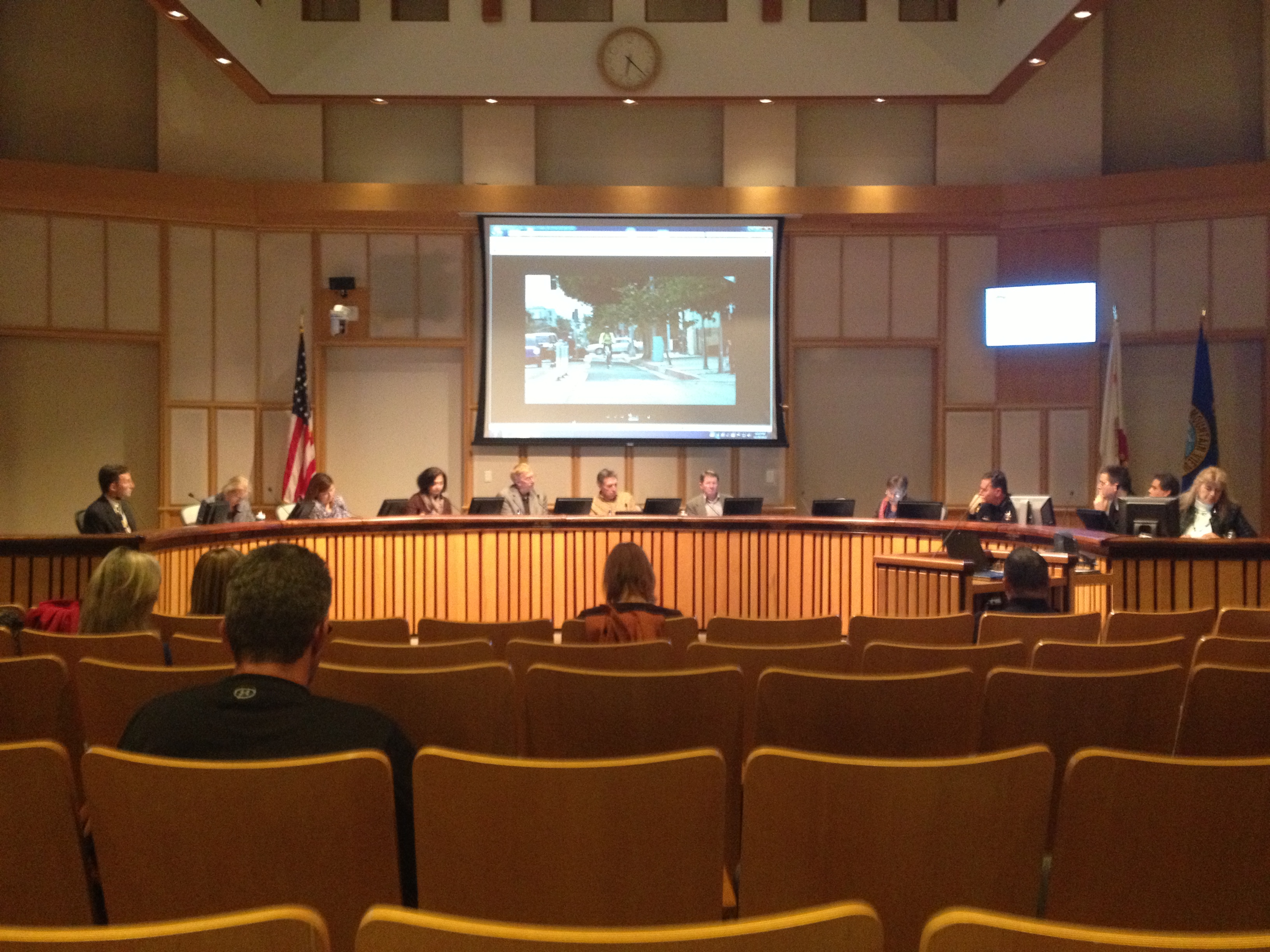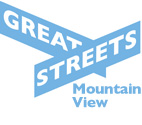City Council Calls for Safer Streets
On November 20, Mountain View City Council held a study session on traffic safety, and Mayor Kasperzak and councilmembers Ronit Bryant and Laura Macias spoke strongly in support of taking action in the form of road design changes to improve safety and make it easier and safer to get around when walking or biking. The study session was held in response to the recent rash of collisions between cars and students walking and biking to local schools, the April case of reckless driving that killed William Ware as he waited for a bus, and growing public awareness that the status quo is negatively impacting the quality of life in the city.

Councilmember Laura Macias briefs the council on safe bicycle street design at the November 20 study session.
City Staff and the Police Department gave a presentation outlining the the student education, enforcement, and data collection efforts that are currently ongoing. Public Works Director Michael Fuller discussed some of the solutions that they are working on including tree trimming, lighting, and potential speed limit reduction, particularly around schools.
In the short-term, ticketing, student education, and tree trimming are strong steps forward for safer and more livable streets, but in the long term, road design changes are necessary. Reducing speed limits on roads like California Street may have some impact on behavior, but as Traffic Officer Lopez from the MVPD commented at a The Shoreline West Association of Neighbors traffic safety meeting: “Once we’re gone, people speed up again.”
The reason people speed once the police leave is because the design of the road sends information to drivers. The ability to see far down the road, wide lanes, and broad corners all contribute to a perception that speeding is normal and accepted. California Street is a prime example of this condition. The long blocks, wide lanes, and rounded corners allow drivers to comfortably maintain high speeds despite traumatizing the people on foot and bike who use the street.
But isn’t speed okay? Speed can have its place on freeways and expressways, where the sole pupose of the road is to move cars quickly. However, on neighborhood streets there are numerous residents living in close proximity to the road and many bicyclists and pedestrians. Reducing speed is not only critical to creating a more livable environment, but should there be a collision between a driver and a pedestrian or bicyclist, small differences in speed are often the difference between life and death. According to numerous sources, 85% of pedestrians die when hit by a car travelling at 40MPH, 40% die at 30MPH, and 10% die at 20mph. The posted speed limit of most large streets in Mountain View is 35, and we know drivers often go faster. Recognizing the reality of our major streets, councilmember Ronit Bryant declared: “If it feels comfortable to be driving 40mph on our major streets, something needs to change.”

Relationship between speed and pedestrian fatalities.
Moving forward, Councilmember Laura Macias called for continued action at the city’s Transportation and Bicycle and Pedestrian Advisory Committee and Mayor Mike Kasperzak stated “I would like to see Mountain View out in front on these issues.” City Council will have an opportunity in January or February of 2013 to confirm their support of safer, more livable streets when they make recommendations for the Capital Improvement Project list. The California Street road diet and streetscape improvement project proposed by Great Streets Rengstorff Park could be added to this list, but your support of this and smilar projects are needed to make truly great streets. Once we have more information on key opportunities for public input, we hope you will join us in writing letters and attending meetings in support of better road design.
